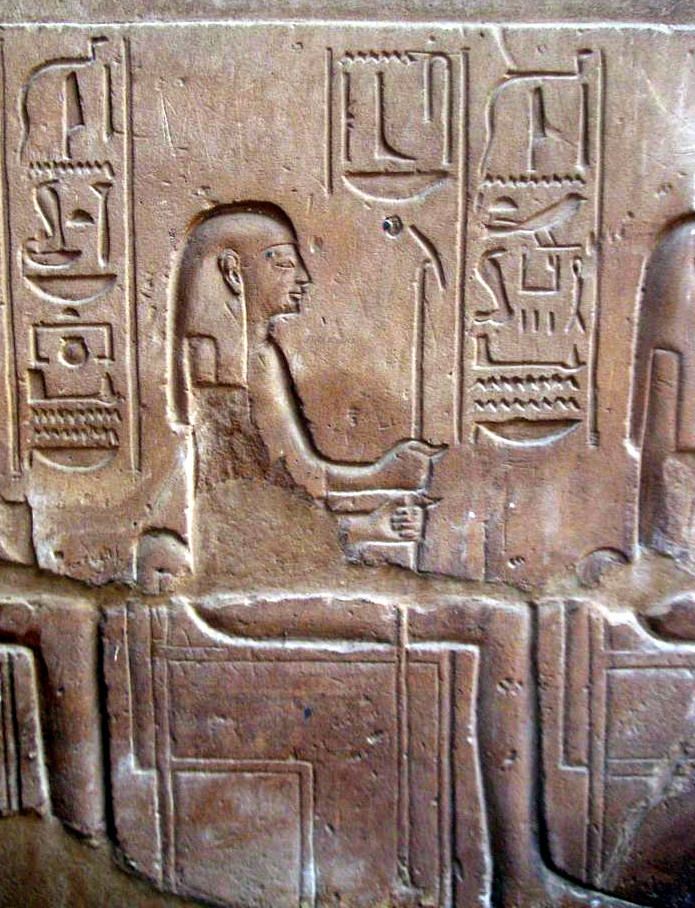 | ||
The cobra-at-rest hieroglyph is used in the Ancient Egyptian language hieroglyphs for the alphabetic consonant letter dj, (a uniliteral, not an Egyptian biliteral).
Contents
Cobra, in hieroglyph word blocks
A variety of hieroglyph composition blocks use the space beneath the cobra-at-rest hieroglyph. In relief scene iconography, the pharaoh is often: "given life, power, dominion, ra-like, forever", in Egyptian: di ankh, usr, djed, ra-ma, djet.
Palermo Stone, Djet Festival
In the 2392 BC Palermo Stone, (the 24th to 23rd century BC, the Royal Annals of the Old Kingdom, the previous 700 years, circa 3100-2400 BC), on the obverse of the Palermo Piece (at Palermo Museum, 1 of the 2 large pieces of the 7—piece Palermo Stone), the cobra-at-rest hieroglyph can be found in 4 locations. Two of them are described in the entire "King Year Record", the register-rectangle encompassing each Year Record. They record in Row II (of VI Rows), the (occurrence) "Year: (the) Time of the 1st Djet Festival", the (occurrence) "Year: (the) Time of the 2nd Djet Festival", is recorded in the following Row III, of Pharaoh, King Den. They appear as below: (the Gardiner font reads left-to-right)
Two other uses of the cobra-at-rest hieroglyph follow: in Row IV, Nynetjer's Year 20 record, and the 4th time in Row V.
Other hieroglyphs represent: "Time": Threshing floor-time (hieroglyph), and "First": Dagger (tp hieroglyph).
The Egyptian hieroglyph alphabetic letters
The following two tables show the Egyptian uniliteral signs. (24 letters, but multiple use hieroglyphs)
